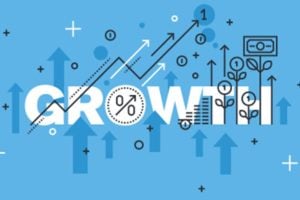Asking customers for anything less than what Amazon would repeatedly deliver would be like taking someone’s iPhone away and expecting them to share landlines with the rest of their family. In other words, business models are dramatically changing and companies now leverage pages from the Amazon playbook to learn and invest in technology that will optimize their supply chain (Logistic View Points, 2017).
In other words, business models are dramatically changing and companies now leverage pages from the Amazon playbook to learn and invest in technology that will optimize their supply chain (Logistic View Points, 2017).
Traditional freight forwarders recognize it’s time to shift business models and reinvent their capabilities, yet it is more complex than that. The complexity of supply chain is caused by pressure to reduce costs and increase performance because of ever-increasing customer expectations. Consequently, businesses need to evolve fast and develop a strategy which will not only meet but in fact exceed modern demands to keep up with emerging trends.
As stated in the European Road Freight Transport 2017 report, the productivity of the European sector is rising and improvement can be recognized, with the European road freight market estimated to have grown by 2.4% in real terms in 2016 – predominantly driven by volume growth in the year.
High demand through e-commerce
World Economic Forum shares how the world’s population is expected to grow by up to 9 billion people in 2050. What this signifies for logistics providers is an increasing demand for e-commerce where a growing, global middle class will gain Internet access and will expect deliveries to remote locations in emerging economies for the first time.
This will lead to an overutilization of the transport infrastructure, followed by increasing congestions and negative environmental impacts. About 40% of people in the urban areas are already exposed to traffic noise exceeding 55 dB, which is far above the comfort level.
Green Logistics is still underdeveloped
Moreover, the concentration of NOx, carbon monoxide and particulate is often still too high for human health. Stuttgart as an industrial metropolis recently decided to protect their inhabitants and forbid diesel vehicles from 2018 onwards.
Freight transport has received little attention (particularly in urban transport policy-making) for a long period of time and the sustainability agenda in the logistics industry is still underdeveloped.
However, the collaborative responsibility for greening logistics resides with three groups: logistics and transport service providers, shippers and buyers as recipients of such services and both, Government and non-Government policy providers.
Source:
Ti (2017), European Road Freight Transport 2017, Transport Intelligence Ltd: Bath (UK).
INRIX (2017), Global Traffic Scorecard 2016.









